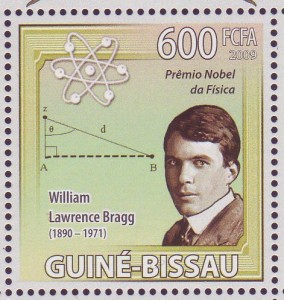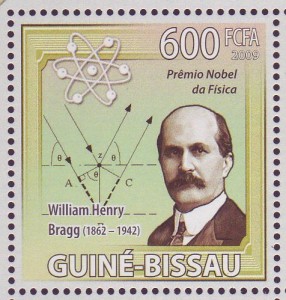Development from 1910s to 1920s
The field developed rapidly in this period. Physicists, William Lawrence Bragg and his father William Henry Bragg were both the scientist who made a huge contribution in the X-ray crystallography field. In 1912, William Lawrence Bragg developed the Bragg’s law, which is the law that connects the observed scattering with reflections from evenly spaced planes within the crystal. Both Braggs received Nobel Prize in Physics for their work in crystallography.
The first atomic resolution structure to be solved was that of table salt in 1914. It was revealed that table-salt structure had ionic bonds and not necessarily covalent bonds. During the same year, the structure of diamond was solved, proving the tetrahedral arrangement of its chemical bonds. Other structures that was also solved in the same year were copper, calcium fluoride (CaF2), calcite (CaCO3), and pyrite (FeS2). The structure of graphite was solved in 1916. Graphite is composed of stacked sheets with no covalent bonds in between, while diamond are held all together by single covalent bonds.



